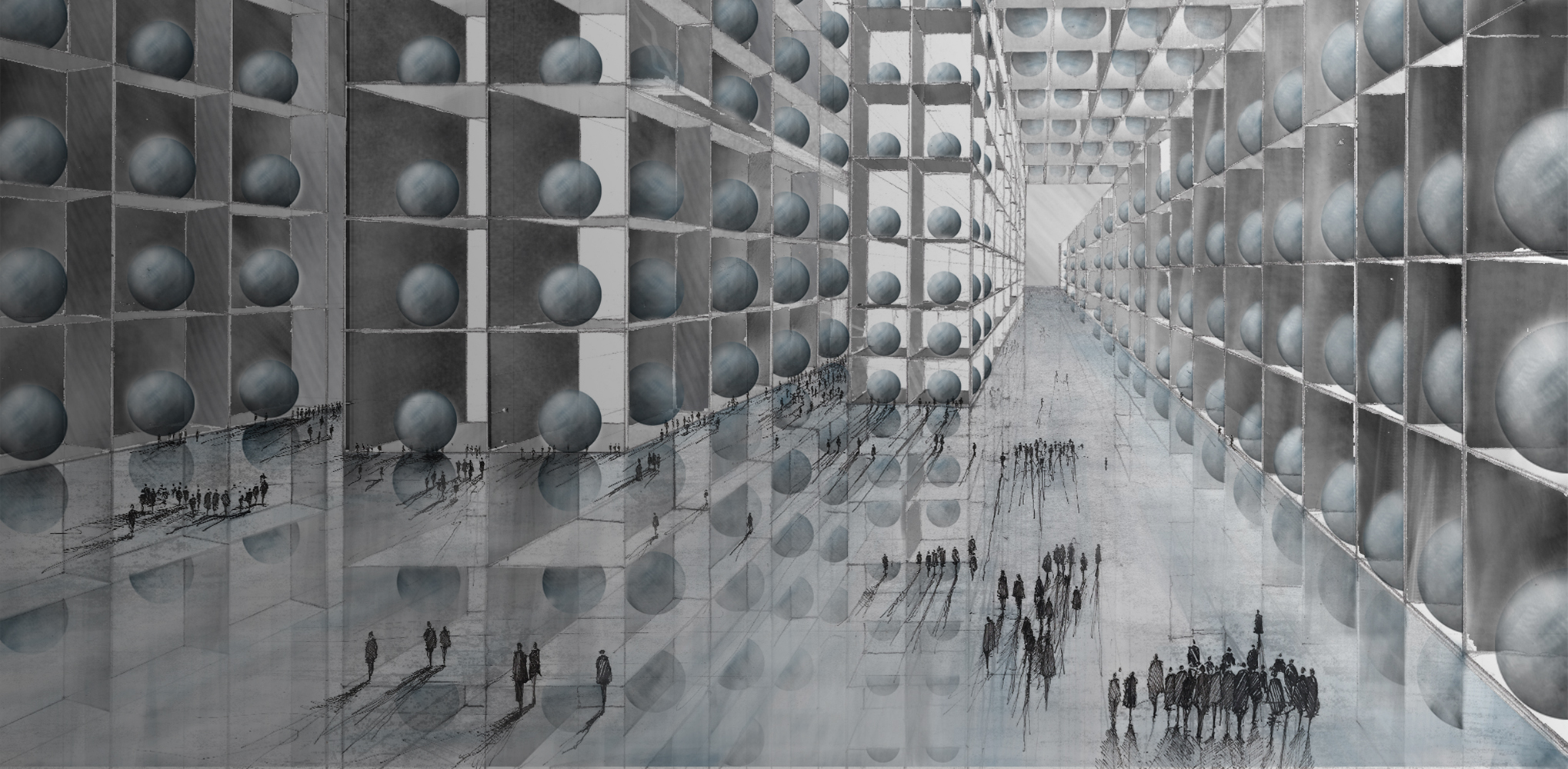Feast your eyes on the world's most outstanding architectural photographs, videos, visualizations, drawing and models: Introducing the winners of Architizer's inaugural Vision Awards. Sign up to receive future program updates >
Small-scale architecture is having a moment. Whether talking about tiny houses or pavilions, these structures embody a light-touch and explore ideas of ephemerality. Pop-ups are a unique type of small-scale architecture specifically designed to stand for set amounts of time. They are a direct response to the convention of architecture as a permanent entity, rethinking traditional brick-and-mortar and big-box stores. Especially prevalent in retail, the idea is to make temporary spaces that embody moments of surprise and wonder.
Part of the confusion with pop-up architecture is that it goes by many names: pop-up shops, flash retail, temporary structures, or pop-up stores. They also come in all shapes and materials, with some expanding to even greater sizes. Introduced over the last 50 years around the world, they became more prevalent in large urban cities like London, Los Angeles, Tokyo and New York. Today, they encompass everything from bookstores and food shops to fashion retail spaces and art galleries. The following projects explore pop-up architecture in plan and section. Take a closer look at how these creative spaces are made:

 JUST A BLACK BOX by Tomaso Boano, London, United Kingdom
JUST A BLACK BOX by Tomaso Boano, London, United Kingdom
Creating a proposal as a piece of un-obstructive street furniture, this project was made by lifting up the box’s skin to transform it into a kiosk with either a commercial or a public use. This project is a hybrid result of combined studies of existing pop-up store and kiosk provision in London and a playful human-scale sculptural study. The greatest advantage of this hybrid kiosk is that, unlike its predecessors, it is usable 24/7, 365 days per year. The design challenges and combines the concepts of kiosk and street furniture. By using simple hydraulic columns, the objects is able to lift up its skin and become a customizable space with uses ranging from coffee shop, bike repair workshop, library, tickets office to small retail outlet or even a mini-cinema.

 Arthur’s Cave, Pop-Up Hotel by Miller Kendrick Architects, United Kingdom
Arthur’s Cave, Pop-Up Hotel by Miller Kendrick Architects, United Kingdom
This cabin, known as ‘Arthur’s Cave’, was one of eight winning entries for Epic Retreats. The project was part funded by the Welsh Government’s Tourism Product Innovation Fund. Miller Kendrick’s design takes its inspiration from the ancient landscape of Wales but utilises modern construction techniques. The structure is a combination of CNC-cut birch plywood ribs and sheathing panels, which act together to form a composite structure. The structural ribs are comprised of either three or five individual sections of plywood, tightly fitted together using ‘jigsaw’ joints with a high degree of tolerance. As a single internal material, the plywood provides both structure, finish, fixtures and fittings – including a plywood sink and bath. The faceted envelope is clad in locally- sourced Welsh larch boards stained black, with sheep’s wool insulation part-filling the cavity.
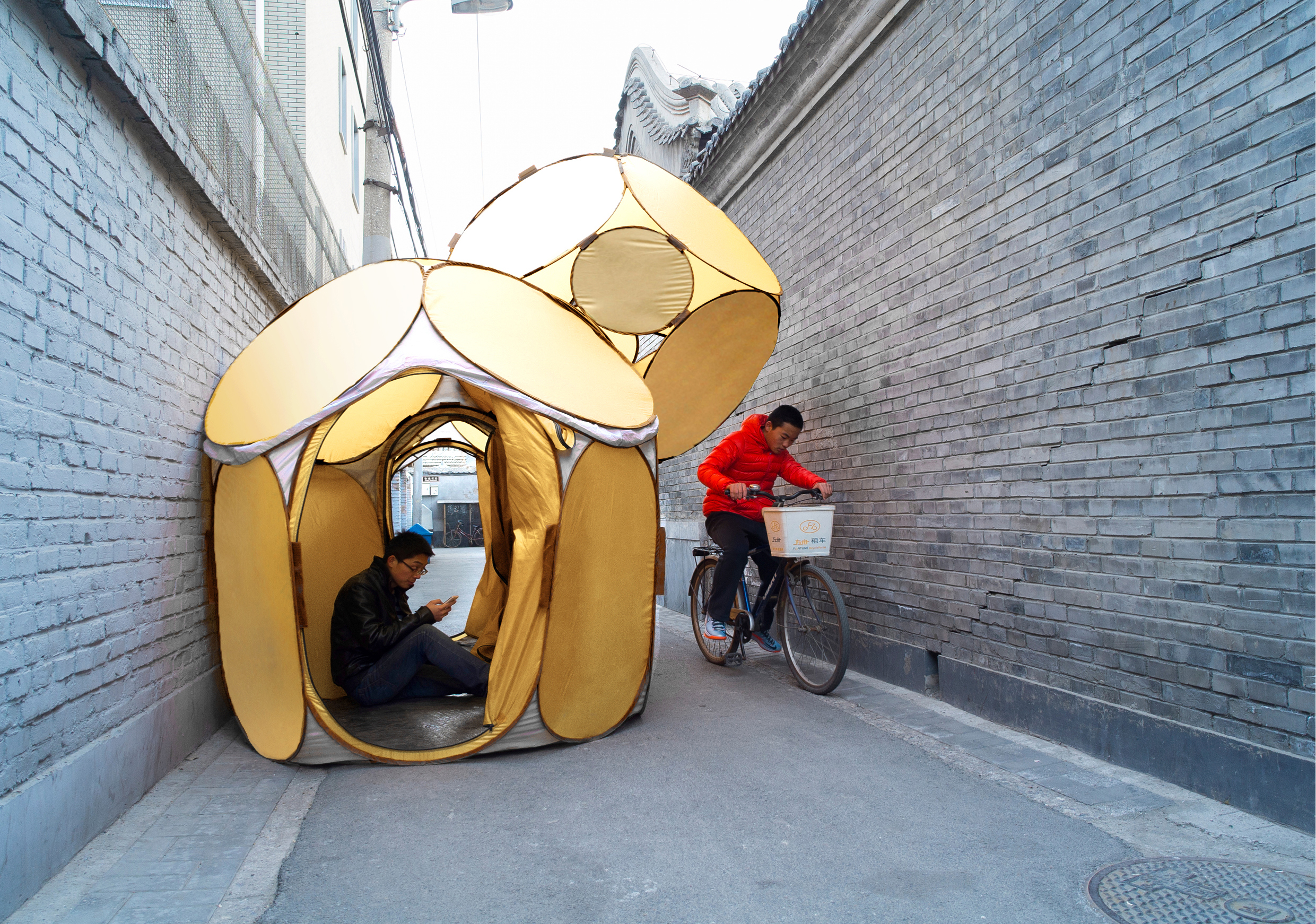
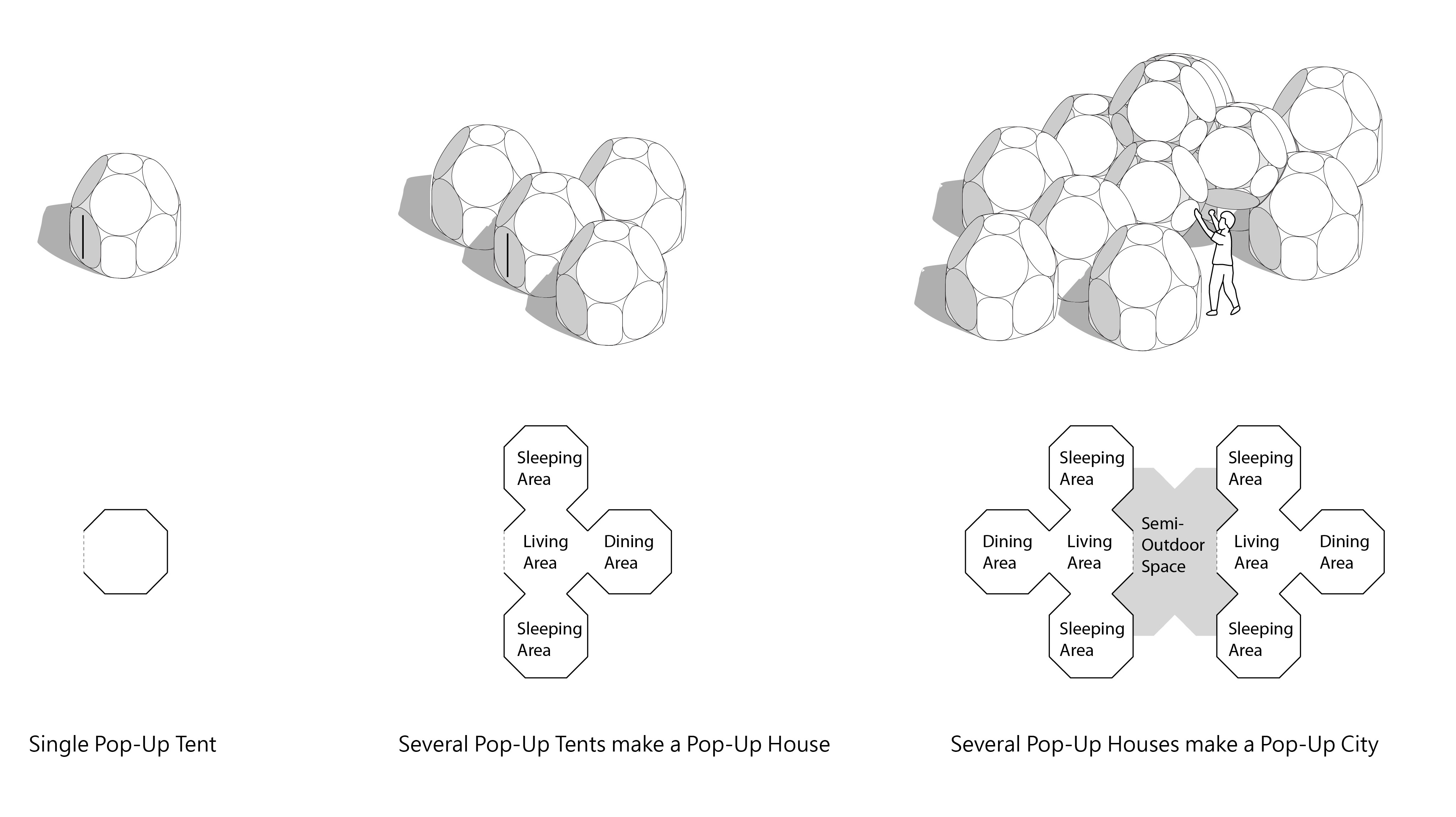
None
Pop-up Habitat by People’s Architecture Office, Beijing, China
The Pop-Up Habitat is a modular and lightweight multi-purpose structural system. Constructed of repurposed reflective panels commonly used in photography, the Pop-Up Habitat makes use of and exaggerates the inherent qualities of these panels: rigidity, flexibility and collapsibility. Pop-Up modules are attached to each other with just velcro and are easily assembled by unskilled labor; each module consists of two halves that can be collapsed into small independent packages. The design is instantly deployable, and goes from flat panels to enclosed tent in just minutes. The Pop-Up Habitat is customizable and has been deployed as an auditorium, gallery, canopy, shelter and tent in diverse areas: historical, commercial, suburban and city center, inside and outside.
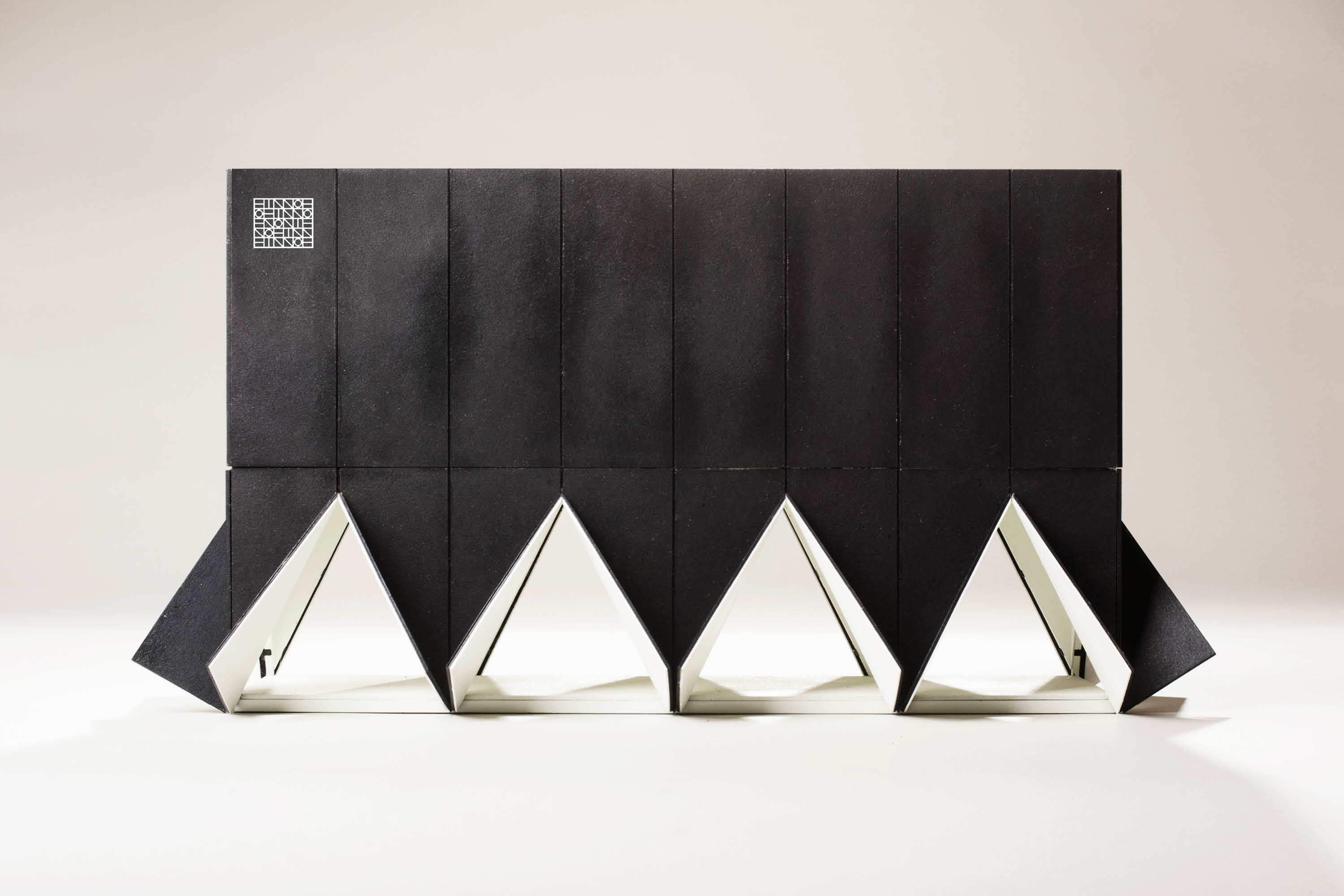
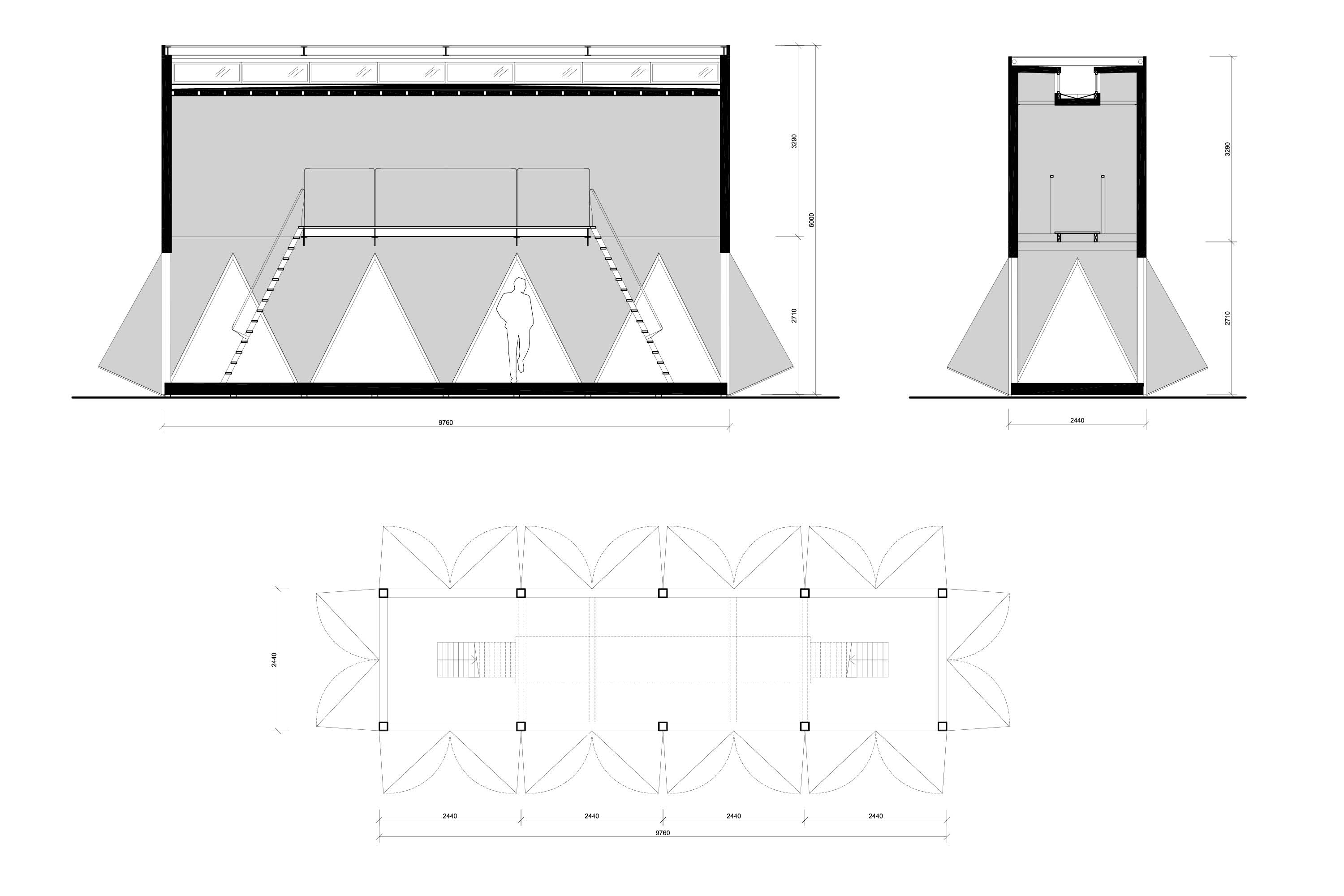 The Wolfhorse by Vardehaugen, Oslo, Norway
The Wolfhorse by Vardehaugen, Oslo, Norway
The gallery is developed for the Helsinki Mobile Museum of Modern Art, tailored for exhibitions and pop-up events in urban spaces. 10 flip-up doors enable the Wolfhorse to transform from a mystical black box to an open and inclusive pavilion in a matter of minutes. Internally a modular system of movable slabs, stairs and railings makes the exhibition space adaptable to a rich variety of happenings. The structure consists of two separate parts; each scaled and designed for container transport and simple assembly. The project was developed in close collaboration with Magnus Kvalheim, Anders Grinde and Einar Elton.
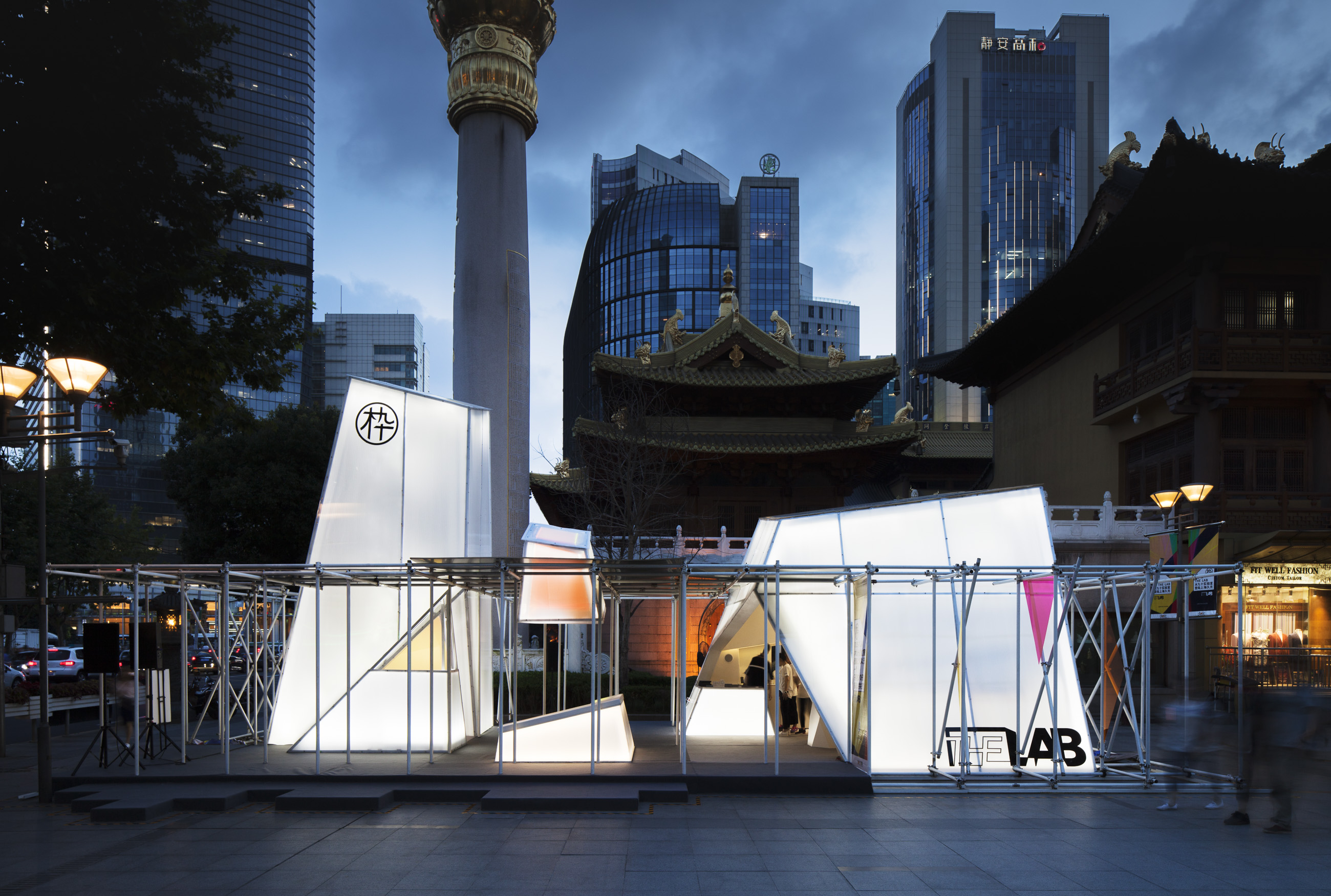
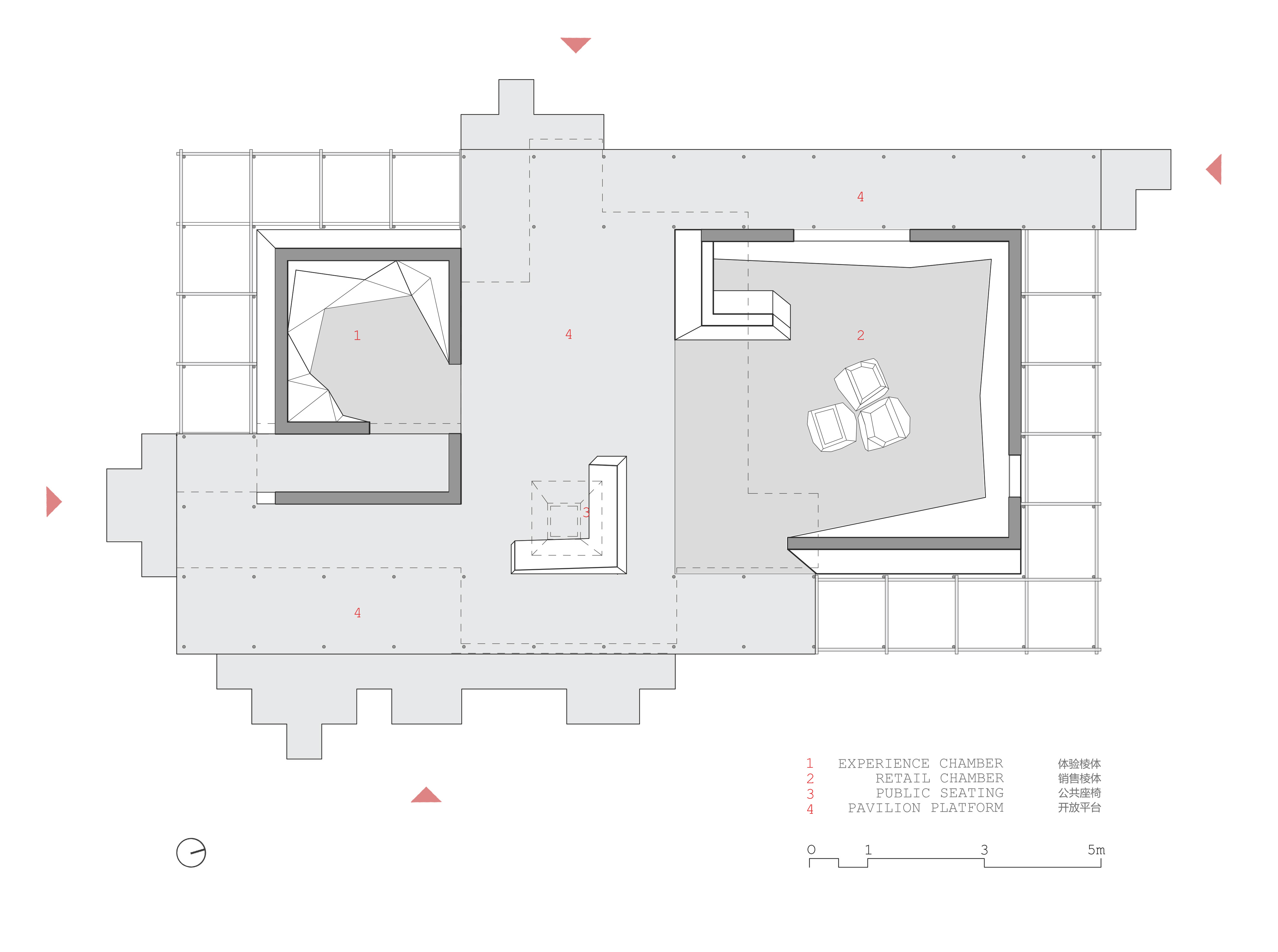 Urban Prisms by Lukstudio, Shanghai, China
Urban Prisms by Lukstudio, Shanghai, China
In June 2016, Lukstudio was commissioned by an eyewear company to design their pop-up pavilion in just under one month. The site, located in Shanghai, China, is on a busy plaza between Jiu Guang, an upmarket department store, and Jing’an Temple, an historic tourist attraction. The design challenges the conventions of pop-up retail by creating an urban sculpture that plays with light and color. Urban Prisms is arranged to direct pedestrian flow and foster an open dialogue between the pavilion and the plaza. The structure is made from a grid of white scaffolding, which not only marks the extent of the area, but also supports a flat canopy to alleviate visitors from the extreme heat and rain in July. In contrast to the linear grid, the roof is punctured by three white prisms made from translucent polycarbonate panels.
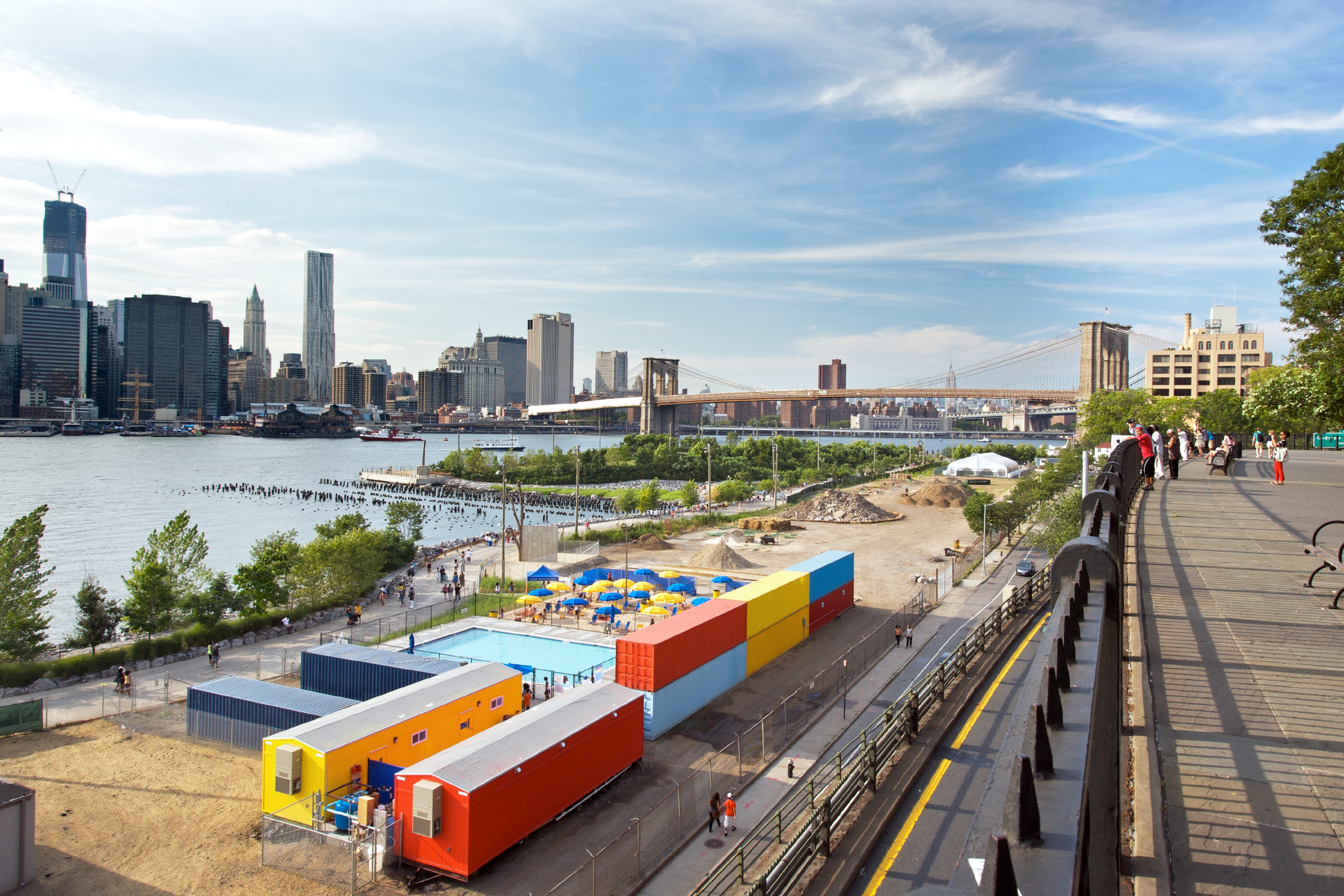
 Brooklyn Bridge Park Pop Up Pool by Spacesmith and Davis Brody Bond LLP, New York, NY, United States
Brooklyn Bridge Park Pop Up Pool by Spacesmith and Davis Brody Bond LLP, New York, NY, United States
Spacesmith and partner firm Davis Brody Bond were enlisted by the Brooklyn Bridge Park for the design of their Pop-up Pool. Rising off of the greenway on the uplands of Pier 2 at the Park, the 30’ x 50’ pool is accompanied by a 2,500 sf sandy beach area supplied with lounge chairs and colorful umbrellas. An adjacent concrete plaza contains picnic tables, more umbrellas and a food and drink concession. Amenities such as showers, restroom and lockers are also provided. The design utilizes repurposed stacked shipping containers painted in eye catching colors to act as a buffer from the noise of the nearby roadways and to provide storage.

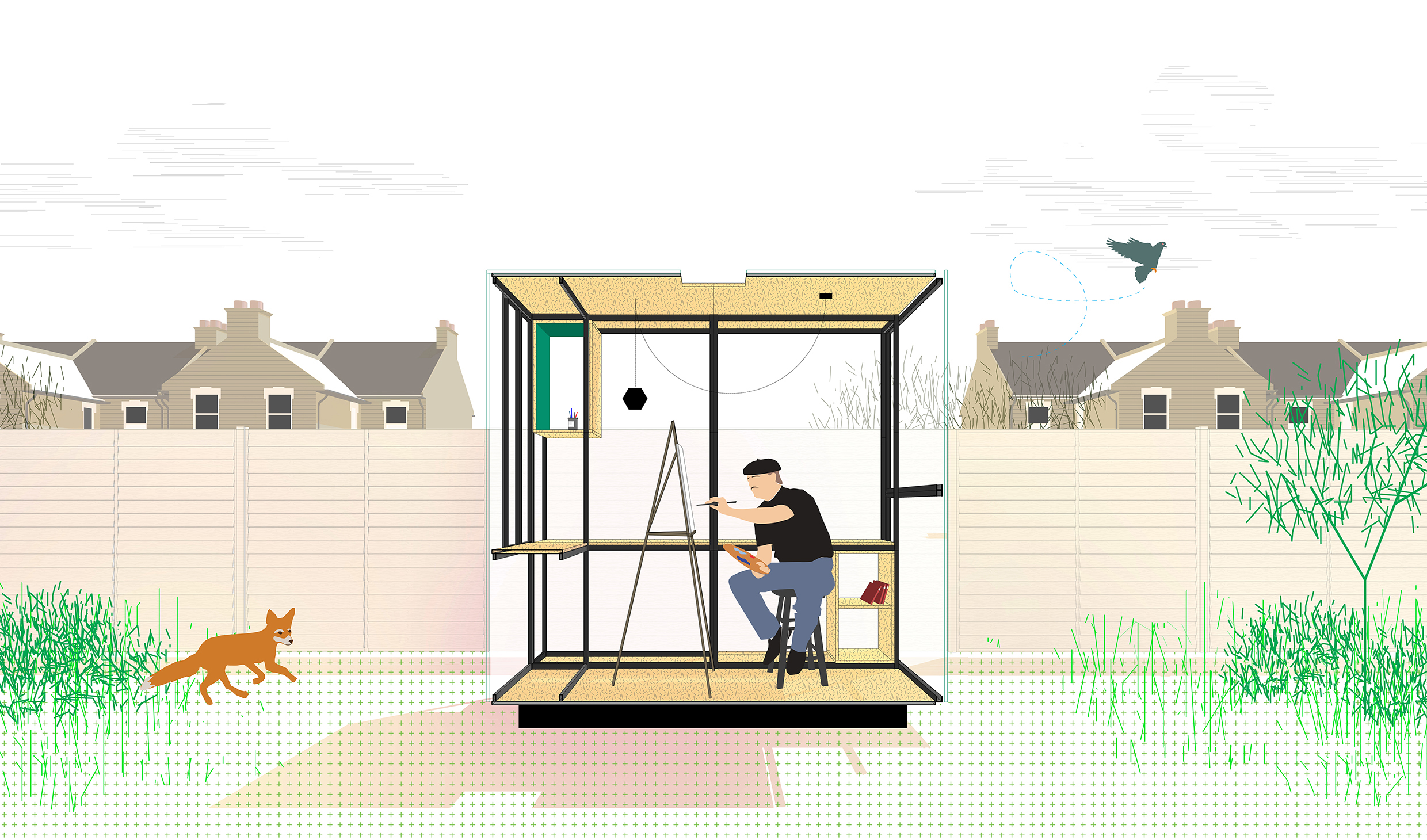
Minima Moralia by Tomaso Boano, London, United Kingdom
Minima Moralia is a critical installation, a manifesto of social hope with no political intention. Inspired by T. Adorno 1951’s masterpiece, it investigates and reflects “damaged lives” in current London condition. It offers tiny, cellular pop-up spaces to be inhabited by designers, sculptors, painters, musicians and other creatives alike. Minima Moralia is a programmatic vision for London’s backyards and interstitial spaces. Each of them will be temporarily occupied by artists. Workshop and live/work studio spaces have potential of creating new typologies for creative communities that would pop up in unused public or private spaces around London.
Feast your eyes on the world's most outstanding architectural photographs, videos, visualizations, drawing and models: Introducing the winners of Architizer's inaugural Vision Awards. Sign up to receive future program updates >
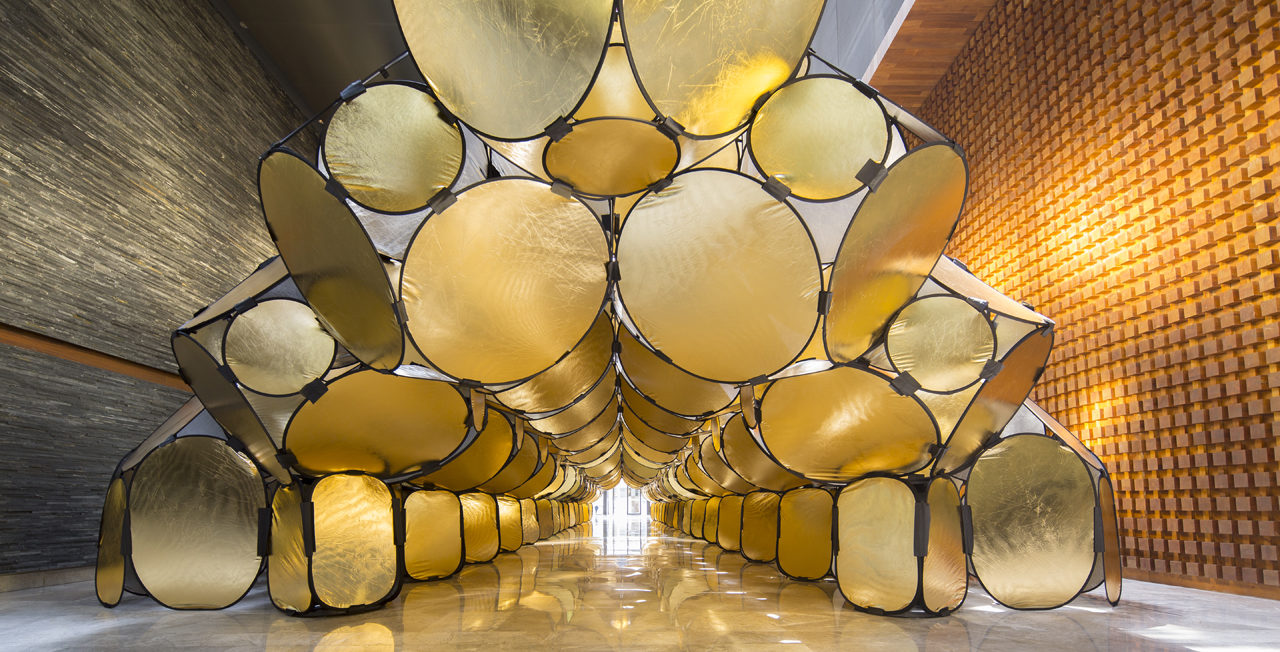





 Arthur's Cave, Pop-Up Hotel
Arthur's Cave, Pop-Up Hotel  Brooklyn Bridge Park Pop Up Pool
Brooklyn Bridge Park Pop Up Pool  JUST A BLACK BOX
JUST A BLACK BOX  Minima Moralia
Minima Moralia  Pop-up Habitat
Pop-up Habitat  The Wolfhorse
The Wolfhorse  Urban Prisms
Urban Prisms 
